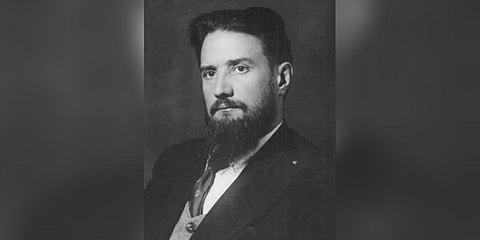

“Some say the world will end in fire/Some say in ice…But if it had to perish twice,/I think I know enough of hate/To say that for destruction ice/Is also great/And would suffice,” wrote Robert Frost.
The ‘American Prometheus’ unleashed the most destructive force known to mankind. In the Soviet Union, a nuclear race ensued leading to the detonation of the “First Lightning” in 1949, their first plutonium implosion bomb.
Igor Kurchatov, the Father of the Soviet Atomic programme, later designed for Joseph Stalin another wipe-out weapon, the hydrogen bomb. A lunar crater and an asteroid are named after him. The nuclear armageddon was imminent, the world shuddered, as the Cold War heated up. Kurchatov, who dreamed of a naval career, wrote his first scientific paper on radioactivity in snow.
Born in 1903 in the southern Ural Mountains of Russia, his parents were designated noble, allowing their three children to attend school. At university, he studied maths and physics, and in 1925 joined renowned physicist Abram Loffe’s institute in Leningrad. Soviet spies trickled back information on the Manhattan Project and eventually atom bombs dropped on Hiroshima and Nagasaki pushed Stalin into creating his own nuke arsenal.
A lab and a community sprang up called Arzamas-16. Kurchatov twisted it to ‘Los Arzamas’, an allusion to Los Alamos. The budget was limitless, and the trial test was done by the Irtysh River in northern Kazakhstan. Lavrentiy Beria, the dreaded head of the secret police, was the project’s organising man, who witnessed the success with great relief.
When the infernal powers of his creation began gnawing his conscience, Kurchatov gave up supervising nuclear testing in 1956. His interests were eclectic – art, music and even exotic plants – all explored in his two-storey eight-room home ‘Forester’s Cabin’ near Arzamas-16. In his epochal piece ‘Hiroshima’ for the New Yorker in 1946, John Hersey wrote that the survivors “still wonder why they lived when so many others died…And now each knows that in the act of survival he lived a dozen lives and saw more death than he ever thought he would see.”
Until his death in 1960, Kurchatov had advocated using nuclear weapons for peace. On August 9, 78 years ago ‘Fat Man’ annihilated Nagasaki.